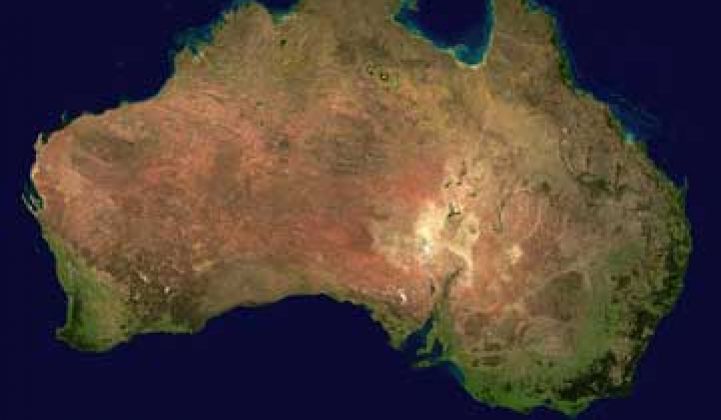When it comes to smart grid, there are a lot of countries that get people excited. China comes to mind. So do Ireland, South Korea and California (which often just acts like its own country).
Another nation that is popping up more on the list these days is Australia. The country has a lot going for it when it comes to smart grid and smart energy: It has morphed into a solar powerhouse; it’s dabbling in smart cities; the government is connecting 90 percent of Aussie homes and workplaces with broadband; and there’s some interesting projects going on with distributed storage. Australia is also a deregulated market with a very high rate of customer turnover. Just as important, the government -- both at the national and local level -- is firmly committed to a range of initiatives to promote renewables and smart grid.
Here are the trends to watch Down Under:
- Smart Grid, Smart City. EnergyAustralia (now EnergyAustralia and AusGrid) won the $100 million project that will include distributed storage, distribution generation, home energy management, substation automation, electric vehicle charging and time-of-use pricing. It involves more than 50 organizations (including IBM, GE Energy, AGL, Sydney Water, Hunter Water, Transgrid, and Australia’s national science agency (CSIRO) and will look at the advantages of integrating technologies across water, gas and broadband networks. Unlike some other smart grid projects, Smart Grid, Smart City is not just about technical issues but also how retail electricity providers can understand how the technology will impact their business case and how it will impact the entire community. “Australian smart grid projects have a stronger community-driven component than in the U.S.,” said Chet Geschickter, Senior Smart Grid Analyst for GTM Research. "Australia is trying to tackle broader sustainability issues that include water, transportation, homes and businesses."
- Storage. One of the ways that there is a greater focus on community solutions is distributed storage. For the Smart Grid, Smart City initiative, storage will come in the form of lithium-ion batteries, such as the ones that could still be used after their useful lifespan as a power source in electric vehicles has run its course. According to GTM Research, there are four small-scale trials overall, including ammonia to hydrogen/nitrogen, graphite, zinc bromine and ultrabatteries. Some of the most dynamic homegrown startups (Wizard Power, ZBB Energy, RedFlow, Ecoult) are also located at the intersection of renewables and storage.
- Solar. Australia has actively been in small-scale residential systems in recent years, a single retailer has more than 50,000 solar residential customers. But large-scale solar also contributed to the nearly 500 percent increase in solar PV in 2010. This was driven by the continent's Solar Cities initiative, solar credits, feed-in tariffs, PV price drops, and a favorable exchange rate, according to Eric Wesoff, who recently wrote about big solar in Australia.
- Broadband. Most of Australia’s utilities will likely leverage the National Broadband Network, which is being built out now and will bring fiber optic cable to 90 percent of homes Down Under. While most of the country’s population is in urban and suburban areas, there are also vast areas that need to be covered to reach the most rural communities. However, a government-sponsored broadband rollout will free up utilities from having to individually build a communications network to every home and business. But that doesn’t mean that mesh, WiMax and cellular aren’t being used for specific applications.
- 20 by 2020. The Australian government has adopted a 20 percent renewable energy target for 2020. Although there are some individual states in the U.S. with equally aggressive goals, Australia wins for its comprehensive national framework. There are only seven states and just over 22 million people, so any decisions made on a national level are also likely to be adopted much faster than they would be in larger, more fragmented markets, like the U.S.
- Proximity to Asian Markets. Not only is Australia seen as a lily pad into China and other Asian markets for smart grid and renewables, but some of Australia’s largest electric distribution companies, such as CitiPower and Powercor, are majority-owned by Cheung Kong Infrastructure Holdings and Hongkong Electric Holdings Limited. Both China and Australia are also some of the most interesting countries to watch in terms of long-haul transmission, according to Geschickter, especially for linking renewables back to urban centers.
Distribution automation, especially with high penetration rates of residential PV, is also moving forward. Home energy management could also heat up in coming years. Australia has a high churn rate in the residential market amongst electric retailers, so retailers are looking for new ways to get and keep their customers. Australia can also be expected to stay out ahead on water issues, since the country is already facing severe water shortages. Smart Grid, Smart City includes some smart grid water components. “They’re going to run out of water before they run out of power,” said Geschickter.



